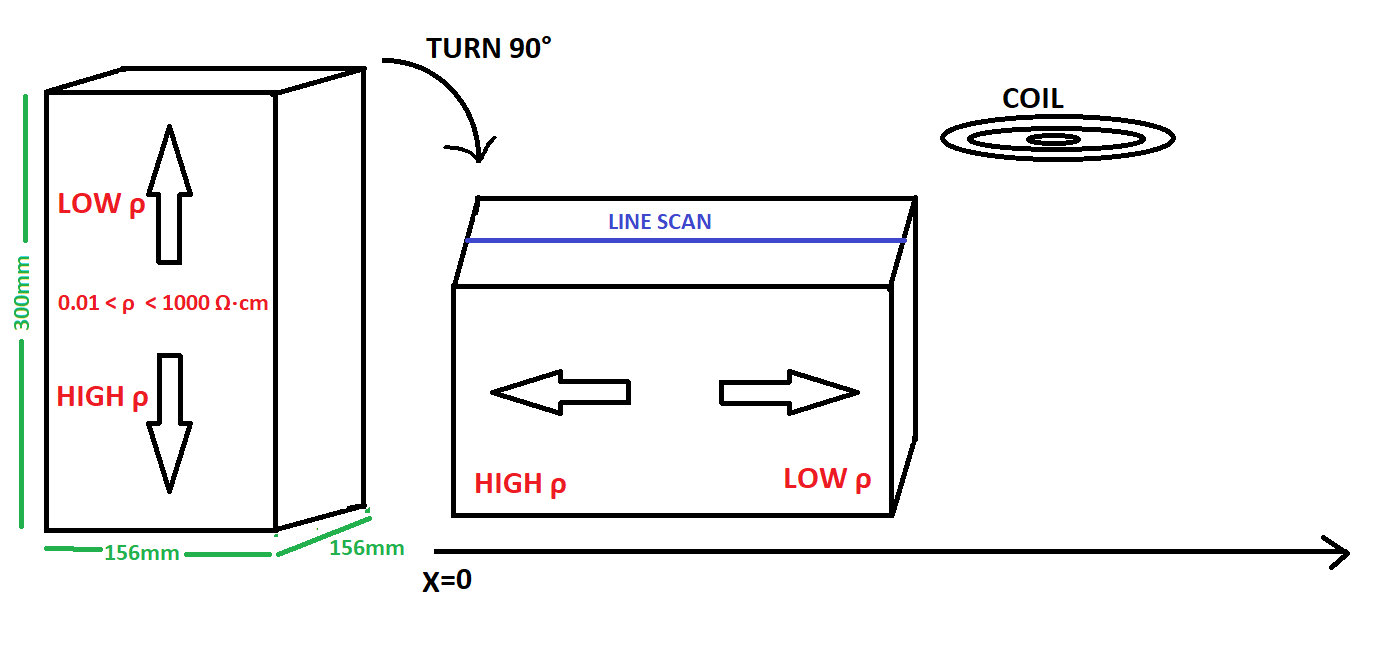Hi,
Background information: I would like to determine the composition of a particular metal+non-metal material. Due to chemistry I do not fully understand, when a block of it is cast, more non-metals at the top than at the bottom. The change in composition will have a significant and measurable impact on the resistivity according to literature I've read and some preliminary tests.
My setup: I have a coil facing down at a fixed height. Below it, I have the block on a motorized platform. I have laid the block on its side, such that the variation in composition, and thereby in resistivity, is now on the x axis. As the platform moves left or right, I am able to observe a change in Rp.
My problem: I believe in order for this to work with any accuracy, the distance between the block and the coil has to be uniform. As the blocks are not perfectly flat, there can be up to 1.5mm of variation in the distance between the block and the coil.
My question: What steps, if any, can I take to minimize the effect of the change in distance on the Rp value?
Note: I do not care for the value of Rp in absolute terms, only in its variation along the block.


